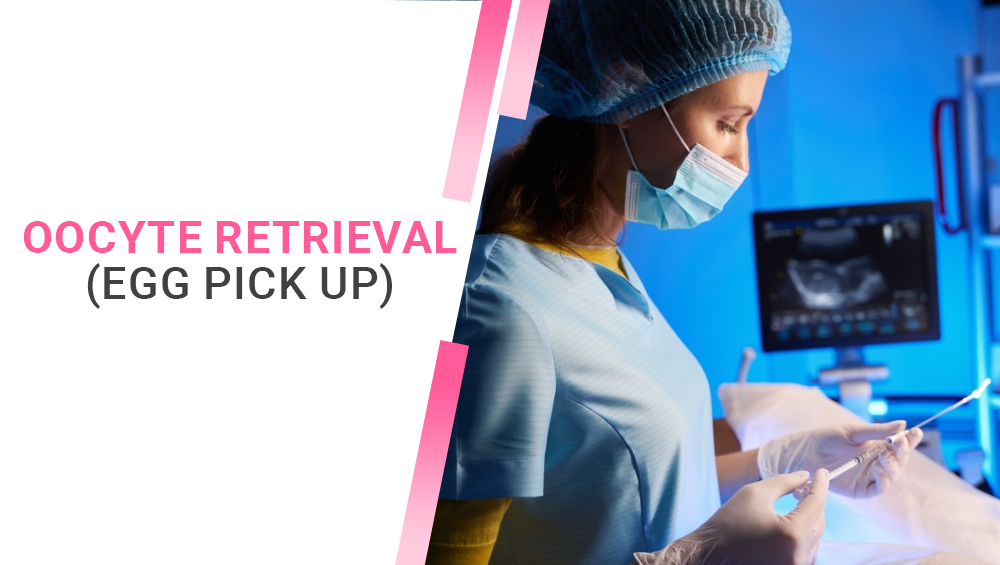Egg Retrieval
In IVF, the egg retrieval process frequently emerges as a focal point of conversation. This pivotal procedure represents a significant milestone on the journey to pregnancy for numerous families. As with any major medical step, it naturally prompts a multitude of questions regarding its intricacies and the measures required to achieve optimal outcomes.
This page is designed to address these questions comprehensively, offering a detailed overview of the egg retrieval process and setting clear expectations for what lies ahead in the IVF journey. Whether you’re just beginning to explore IVF or are preparing for the egg retrieval itself, this guide aims to provide the clarity and information you need.
The Critical Step Of Egg Retrieval During In IVF
In Vitro Fertilization (IVF) is a complex and meticulously orchestrated process involving several critical steps. Central to this procedure is the egg retrieval stage, which plays a pivotal role in the journey toward achieving a successful pregnancy. During IVF, eggs are extracted from the ovaries, fertilized with sperm in a laboratory setting, and then the resulting embryo(s) are transferred into the uterus.
Egg retrieval is an indispensable component of the IVF process. Whether the eggs are sourced from the intended mother or an egg donor, their quality and viability are crucial to the success of fertilization and subsequent embryo development. This step ensures that the healthiest and most viable eggs are collected, significantly impacting the overall success rate of IVF treatments.
How Egg Retrieval Is Done in IVF
Egg retrieval is a crucial step in the IVF process. It involves collecting mature eggs from a woman’s ovaries so they can be fertilized in a laboratory. Here’s an overview of how this procedure is done:
Preparation
- Ovarian Stimulation:
- Before the egg retrieval, the woman undergoes ovarian stimulation using fertility medications. These medications encourage the ovaries to produce multiple mature eggs in one cycle.
- The process typically lasts about 10-14 days and involves regular monitoring through blood tests and ultrasound to track the development of the follicles (fluid-filled sacs where eggs mature).
- Trigger Shot:
- Once the follicles have reached the desired size, a trigger shot (usually hCG or another hormonal injection) is administered. This shot helps the eggs complete their maturation process and prepares them for retrieval.
- The egg retrieval procedure is scheduled for approximately 36 hours after the trigger shot.
The Procedure
- Sedation:
- On the day of the retrieval, the woman is given a mild sedative and pain medication to ensure comfort during the procedure. General anesthesia is sometimes used but is not always necessary.
- Transvaginal Ultrasound Aspiration:
- The most common method for egg retrieval is transvaginal ultrasound aspiration. The procedure typically takes about 20-30 minutes.
- An ultrasound probe is inserted into the vagina to visualize the ovaries and guide the retrieval process.
- A thin needle is then passed through the vaginal wall into the follicles. Using gentle suction, the eggs are aspirated (sucked out) from the follicles and collected into test tubes.
Post-Retrieval
- Recovery:
- After the procedure, the patient is monitored for a short period before being allowed to go home. Most women experience mild cramping and some spotting, which usually subsides within a day or two.
- Rest is recommended for the remainder of the day, and normal activities can typically be resumed the next day.
- Egg Examination and Fertilization:
- The retrieved eggs are taken to the lab where they are examined for maturity and quality.
- Mature eggs are then either combined with sperm for conventional fertilization or injected with a single sperm via intracytoplasmic sperm injection (ICSI), depending on the specific needs of the patient.
- Embryo Development:
- Fertilized eggs are cultured in the lab for several days (usually 3-5 days) until they develop into embryos.
- The best quality embryos are selected for transfer into the uterus or for freezing for future use.
Key Points to Remember
- Monitoring and Preparation: Close monitoring during ovarian stimulation is crucial to ensure the best possible outcome for egg retrieval.
- Comfort and Safety: Sedation and careful procedural techniques are used to maximize patient comfort and minimize risks.
- Post-Procedure Care: Follow the care instructions provided by the healthcare team to ensure a smooth recovery and optimal results.
Egg retrieval is a well-established and relatively safe procedure that plays a critical role in the success of IVF treatments. By understanding the process and knowing what to expect, patients can approach this step with greater confidence and peace of mind.

